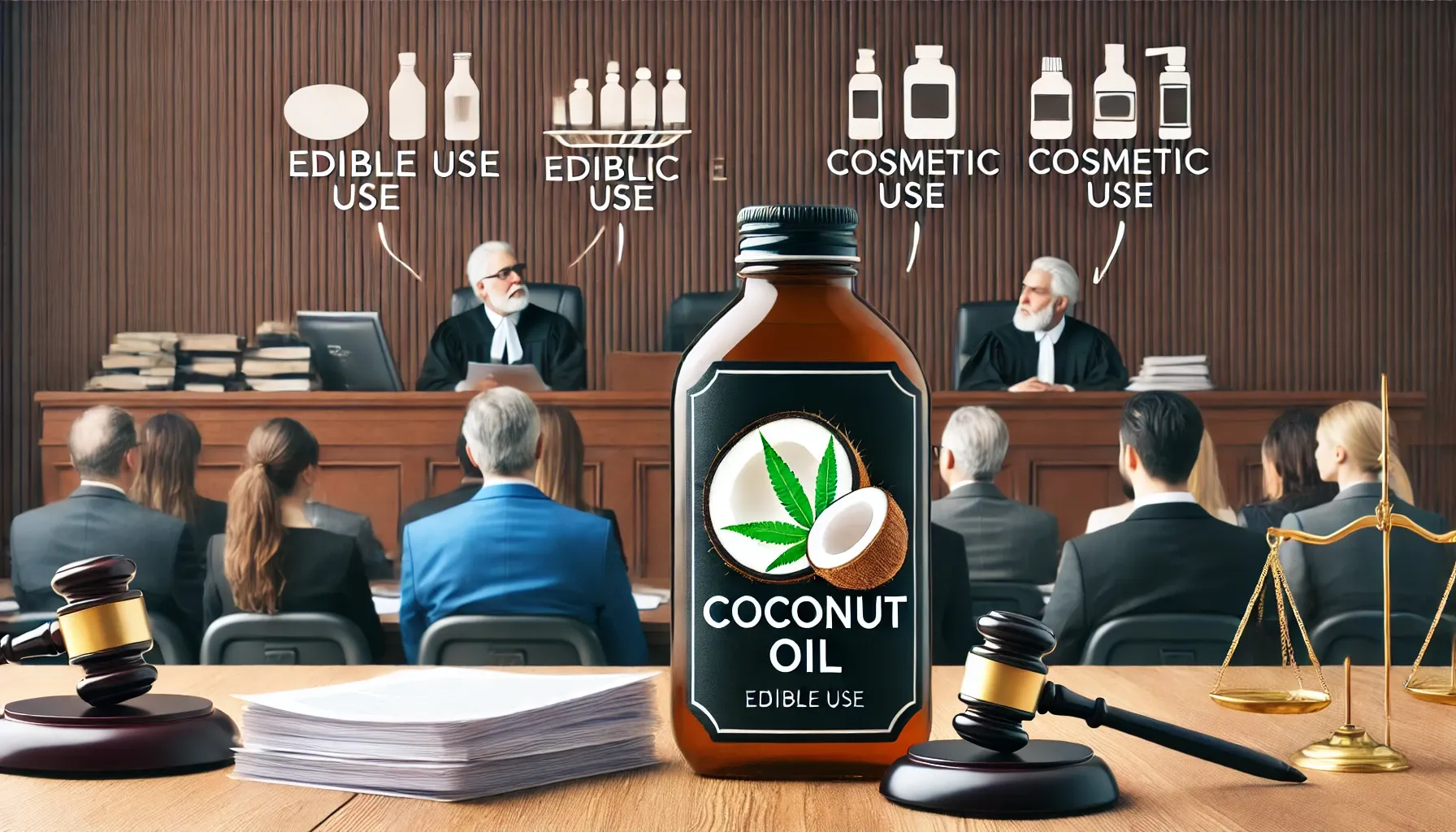The Supreme Court rules that pure coconut oil is classified as 'edible oil' under the Central Excise Tariff Act unless packaged and marketed as a cosmetic, in which case it is taxed as 'hair oil'.

In a landmark ruling, the Supreme Court of India has settled a long-standing dispute on the classification of pure coconut oil under the Central Excise Tariff Act, 1985. The Court held that coconut oil would be taxed as 'edible oil' unless its packaging and marketing meet specific conditions for it to be classified as 'hair oil'. This judgment draws a clear line between edible commodities and cosmetic products, impacting both taxation and industry practices.
Key Takeaway: Packaging Determines Classification
- The Court held that pure coconut oil, sold in small quantities ranging from 5 ml to 2 litres, should be classified as 'edible oil' under Heading 1513 in Section III-Chapter 15 of the First Schedule to the Central Excise Tariff Act, 1985.
- However, if the packaging and marketing are designed specifically for cosmetic purposes, the product falls under 'hair oil' in Heading 3305 of Chapter 33.
The Bench’s Rationale:
- The ruling by the bench of Chief Justice Sanjiv Khanna, Justice Sanjay Kumar, and Justice R Mahadevanclarified that unless coconut oil’s packaging explicitly signals cosmetic use, it cannot be taxed as a hair oil.
- The Court stated: “We are of the opinion that pure coconut oil sold in small quantities as 'edible oil' would be classifiable under Heading 1513… unless the packaging thereof satisfies all the requirements set out in Chapter Note 3 in Section VI-Chapter 33… whereupon it would be classifiable as 'hair oil' under Heading 3305.”
15-Year Dispute: From Tribunal to Supreme Court
The judgment resolves a 15-year-old dispute involving appeals filed by the Revenue Authorities against a decision of the Customs Excise and Service Tax Appellate Tribunal (CESTAT) dated June 25, 2008. The case deals with revenues and penalties totaling ₹159 crores.
Key Facts:
- In 2009, the Revenue Department filed eight appeals related to the period from February 2005 to February 2007.
- Four appeals were against M/s Marico Ltd, known for its popular "Parachute" brand of coconut oil.
- The remaining appeals targeted Marico’s job-workers in Puducherry: M/s Aishwarya Industries, M/s Moreshwar Industries, M/s Shivam Enterprises, and M/s Sowparnika Enterprises.
- In 2008, the Central Excise Authorities imposed duties, interest, and penalties on Marico and its job-workers, classifying the oil as 'hair oil'.
When the companies appealed, the CESTAT ruled in their favor, prompting the Revenue Department to escalate the matter to the Supreme Court.
The Split Verdict and the Three-Judge Bench
In 2018, a two-judge bench delivered a split verdict:
- Justice Ranjan Gogoi held that coconut oil in small packs should be classified as edible oil.
- Justice R. Banumathi ruled that coconut oil in small containers, if intended for use as hair oil, should be classified as hair oil.
This deadlock led to a referral to the three-judge bench for final resolution.
Test for Classifying Coconut Oil as Edible Oil
The Supreme Court outlined clear criteria to distinguish between edible oil and hair oil:
- Edible Grade Packaging:
- The oil must be packed in containers using edible-grade plastic.
- Compliance with Food Laws:
- It must meet the standards under the Food Safety and Standards Act, 2006.
- Regulatory Conformity:
- The packaging must adhere to the Edible Oils Packaging (Regulations) Order, 1998.
- Shelf Life:
- Edible oil has a shorter shelf life compared to hair oil.
- Indian Standards Specifications:
- The oil must comply with the specific standards set for edible oils.
The Court emphasized: “Edible coconut oil requires to be packed in containers using edible grade plastic… Further, edible oil would have a shorter shelf life than oil meant for cosmetic purposes.”
Packaging and Marketing: Not Always Conclusive
- The Court rejected the notion that small packaging alone signifies cosmetic use.
- It observed that consumers may buy cooking oil in small quantities for economic or health reasons.
The Court explained: “The smaller size of the packaging of such oil cannot be taken to mean that it is to be used as 'hair oil' without any pointer to that effect.”
Marketing Claims and Trademark Registration
- The Revenue Department argued that advertisements featuring actresses with flowing hair indicated the oil’s use as hair oil.
- The Court dismissed this, referencing the decision in Meghdoot Gramodyog Sewa Sansthan v. Commissioner of Central Excise (2005), which held that product imagery alone does not determine classification.
The Court also noted that Marico’s "Parachute" trademark was registered for multiple categories, including edible oils.
Case: Commissioner of Central Excise, Salem v. M/s Madhan Agro Industries (Pvt) Ltd.





